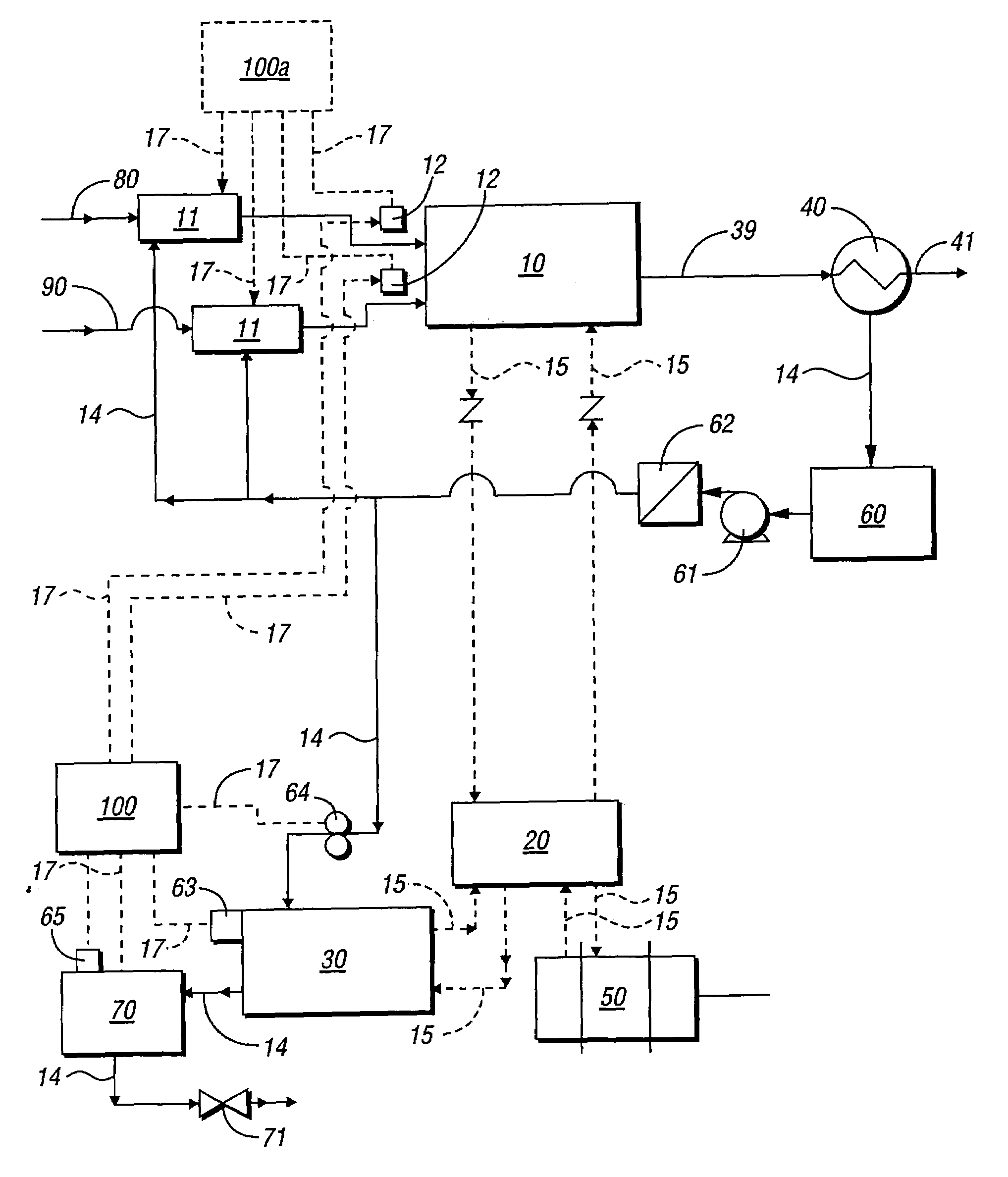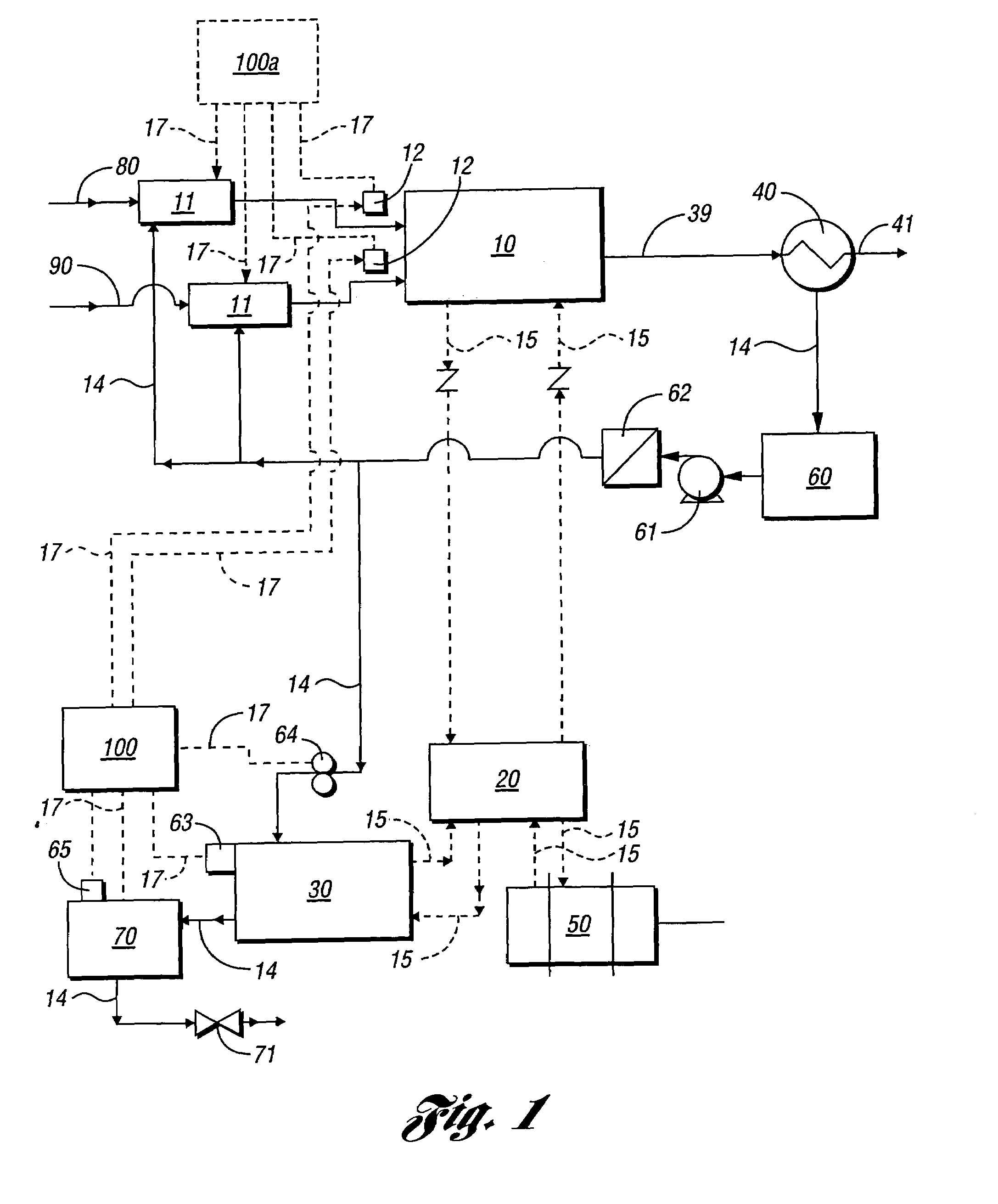Fuel cell hybrid vehicle with automatically watered aqueous batteries
a fuel cell and hybrid technology, applied in the direction of cell components, electrochemical generators, cell component details, etc., can solve the problems of electric vehicles with a relatively limited range, heavy batteries, and drawbacks of pure electric vehicles
- Summary
- Abstract
- Description
- Claims
- Application Information
AI Technical Summary
Benefits of technology
Problems solved by technology
Method used
Image
Examples
Embodiment Construction
[0011]The use of flooded aqueous batteries for propulsion in electric and hybrid vehicles has been almost abandoned due to the necessity of constantly watering such batteries. Sealed, so called maintenance free, batteries, particularly those that are “starved” or designed to function with a minimal quantity of electrolyte are generally more expensive and shorter lived than flooded cells. By solving the watering problem, the present invention makes it possible to use flooded aqueous batteries and thus yields a reduction in cost and an increase in reliability over time. The present invention can be used with any aqueous chemistry battery such as nickel-iron, nickel cadmium, nickel hydroxide, and lead acid.
[0012]The present invention makes use of the pure water that is a natural byproduct of fuel cell operation. This water is generated on the cathode side of a fuel cell and carried out of the cell via the exhaust air. By using a heat exchanger (or similar method) this water is extracte...
PUM
| Property | Measurement | Unit |
|---|---|---|
| energy density | aaaaa | aaaaa |
| torque | aaaaa | aaaaa |
| acceleration | aaaaa | aaaaa |
Abstract
Description
Claims
Application Information
 Login to View More
Login to View More - R&D
- Intellectual Property
- Life Sciences
- Materials
- Tech Scout
- Unparalleled Data Quality
- Higher Quality Content
- 60% Fewer Hallucinations
Browse by: Latest US Patents, China's latest patents, Technical Efficacy Thesaurus, Application Domain, Technology Topic, Popular Technical Reports.
© 2025 PatSnap. All rights reserved.Legal|Privacy policy|Modern Slavery Act Transparency Statement|Sitemap|About US| Contact US: help@patsnap.com


